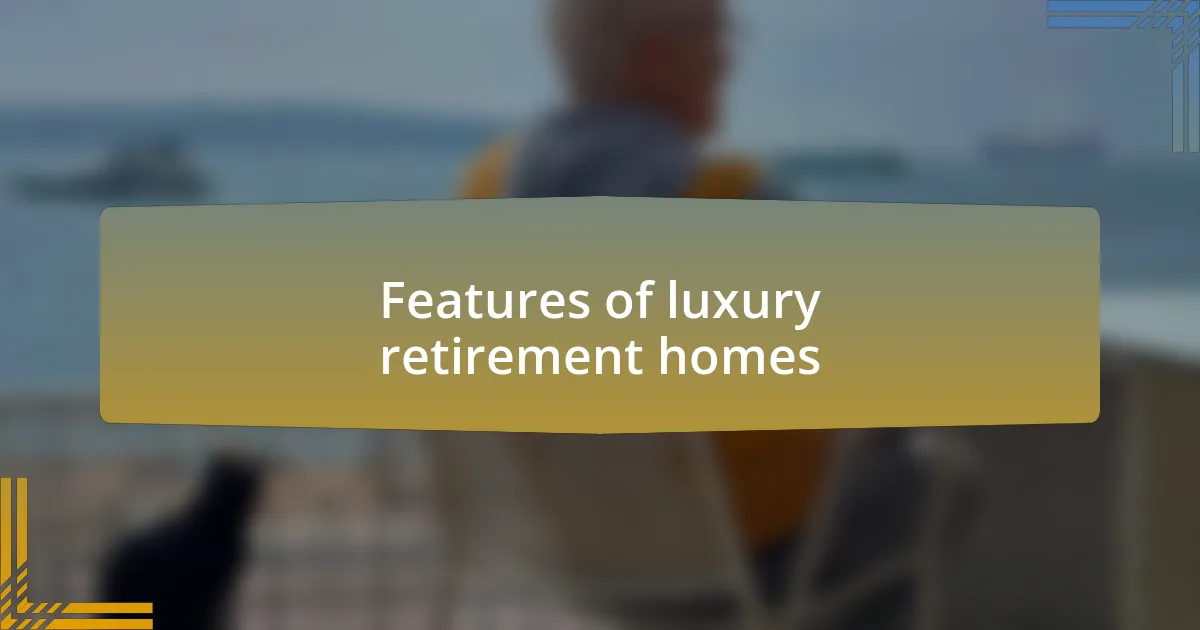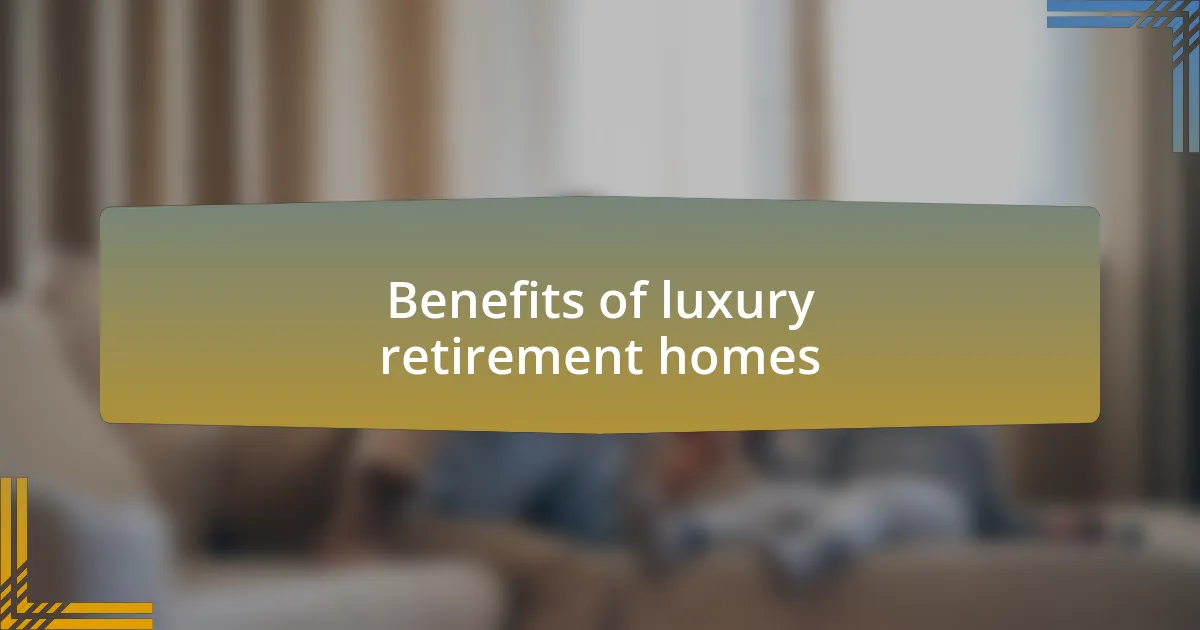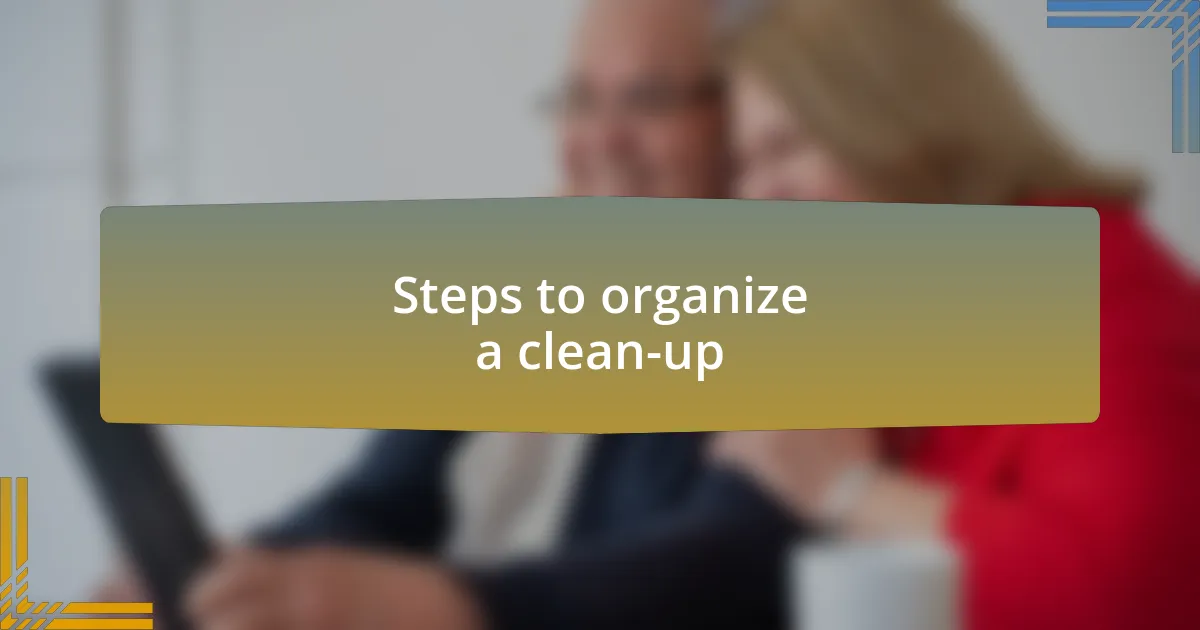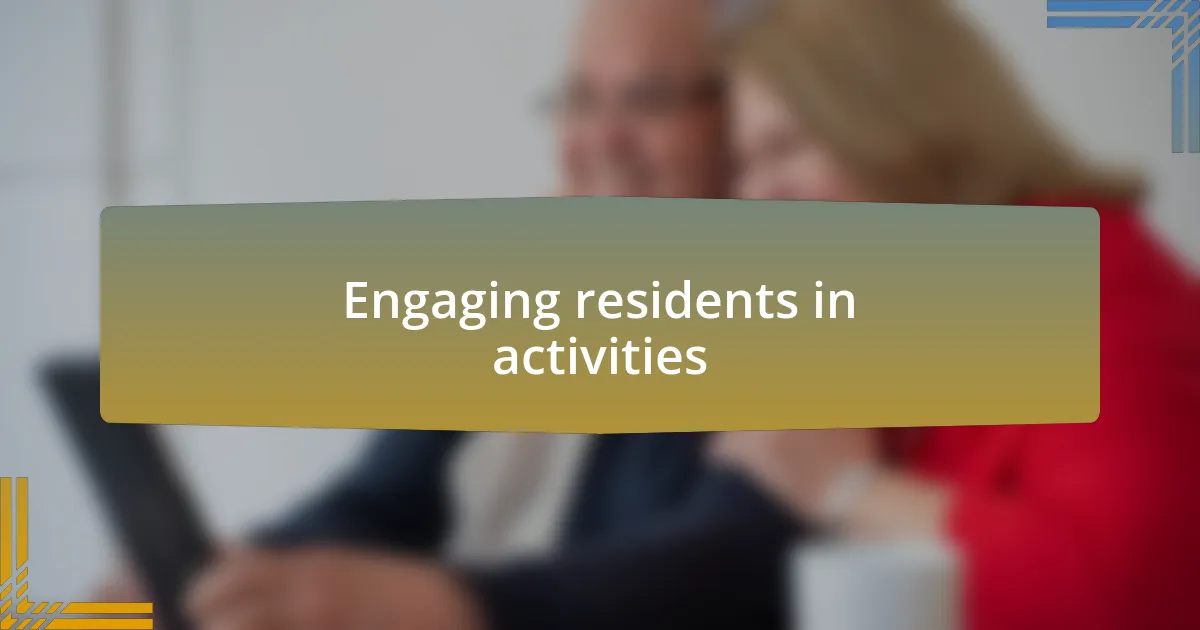Key takeaways:
- Luxury retirement homes enhance residents’ well-being through community engagement and personalized living spaces.
- Health and wellness amenities, along with 24/7 care, provide peace of mind and encourage active lifestyles among seniors.
- Successful community clean-ups require clear goals and volunteer involvement to foster a sense of shared purpose and connection.
- Recognizing individual contributions and creating enjoyable activities boosts participation and strengthens community ties.

Understanding luxury retirement homes
Luxury retirement homes offer more than just a roof over one’s head; they create an environment that fosters community and personal fulfillment. I remember visiting a stunning facility that not only prioritized comfort but also provided residents with various engaging activities. It made me think—how can a space enhance our golden years?
When I walked through those beautifully designed common areas, each filled with art and inviting seating, I felt a sense of warmth and belonging. It struck me that the layout and aesthetics of such homes greatly influence the emotional well-being of their residents. Have you ever considered how much our surroundings shape our happiness?
In these luxury settings, residents often have access to services like gourmet dining and wellness programs tailored to their needs. I recall speaking to a resident who shared how these offerings not only catered to her health but also introduced her to new friendships and experiences. It raises an interesting question: how crucial is the combination of luxury and community in enhancing our quality of life as we age?

Features of luxury retirement homes
Luxury retirement homes often feature expansive, beautifully landscaped gardens that serve as serene spaces for reflection and relaxation. I can still recall the tranquility I felt while walking through a lush courtyard filled with blooming flowers and comfortable seating. It’s remarkable how nature can elevate our mood and encourage social interactions among residents.
Another key aspect is the emphasis on customized living spaces. I remember chatting with a couple who personalized their apartment with family photos and cherished artwork. This kind of attention to personal taste not only makes a space feel like home but also preserves an individual’s identity. Have you thought about how important it is for residents to express themselves in their living environments?
Furthermore, luxury retirement homes often incorporate advanced technology to enhance residents’ quality of life. I once attended a demonstration of a smart home system that enabled seniors to control their lighting and temperature with ease. It made me wonder—how can such innovations improve comfort and safety for residents, allowing them to enjoy their independence longer?

Benefits of luxury retirement homes
One of the most notable benefits of luxury retirement homes is the vibrant community environment they foster. I remember visiting a facility where residents gathered for a weekly book club, sharing laughter and insights over their favorite novels. It struck me that this sense of camaraderie not only combats loneliness but also creates lasting friendships, enriching their daily lives in ways that are hard to quantify. Doesn’t it make you feel hopeful to think that these connections can flourish in such nurturing spaces?
Health and wellness amenities are another significant advantage. During a recent visit to a luxury retirement home, I was impressed by their state-of-the-art fitness center and diverse wellness programs. I met a resident who credited his newfound love for yoga with helping him manage stress and improve his overall physical health. How amazing is it that such facilities can empower seniors to maintain their vitality and encourage them to pursue active, fulfilling lifestyles?
Moreover, the peace of mind that comes with 24/7 care and security cannot be overlooked. I chatted with a resident who expressed gratitude for the attentive staff who were always available to assist with any needs. It made me think about how comforting it is to know that help is just a call away, allowing residents to focus on enjoying their retirement without the burden of worrying about safety or medical emergencies. Isn’t that a priceless benefit?

Steps to organize a clean-up
Starting a clean-up requires a bit of planning, and I always begin by setting clear goals. For instance, I once aimed to tackle a local park that had become overrun with litter. Defining what we wanted to achieve—whether it was beautifying a space or raising awareness about environmental issues—made it much easier to coordinate efforts.
Next, gathering volunteers is crucial. I remember posting in community forums and reaching out to friends to create excitement about the event. The enthusiasm was contagious; when people feel a personal connection to the cause, they are more likely to join in. Have you ever felt that surge of motivation when working alongside others who share your passion? It’s that sense of collective purpose that really sparks change.
Once the day of the clean-up arrives, having the right supplies is essential. I learned this the hard way during my first clean-up—without gloves and bags, our efforts felt somewhat futile. Arranging for these materials ahead of time not only makes the event smoother but also encourages everyone to participate actively. You’d be surprised at how a simple pair of gloves can transform the experience from drudgery to a fun community outing!

Engaging residents in activities
To truly engage residents in activities, it’s essential to tap into their interests and create a sense of ownership. I recall a time when we decided to hold a gardening workshop. The excitement on residents’ faces as they selected their plants was palpable; they weren’t just participants—they were co-creators invested in the outcome. Doesn’t it feel great to watch someone light up when they’re doing something they love?
In my experience, turning clean-up efforts into a social gathering can significantly boost participation. I remember how we incorporated a potluck following one of our events, encouraging everyone to bring a dish to share. This not only fostered camaraderie among residents but also made the clean-up feel less like a chore and more like a festive occasion. Isn’t it amazing how shared meals can bring people together and create lasting memories?
Additionally, recognizing contributions can be a powerful motivator. At one event, we decided to highlight individual efforts by creating fun awards, like “Most Inspired Choice of Trash Bag Color.” The laughter and playful competition energized the group and encouraged everyone to channel their creativity. How often do we get to celebrate the little things? That sense of recognition can really deepen a resident’s connection to the community.

Building lasting community relationships
Building lasting community relationships involves intentional interactions and shared experiences. I remember a day when we organized a neighborhood clean-up, and it was inspiring to see residents come together, armed with gloves and trash bags. As we worked side by side, stories flowed naturally—old memories were revived, and laughter echoed in the air. How can a simple task become a memorable bonding experience?
Creating a sense of belonging is pivotal in establishing community ties. During one clean-up, we found an old park bench that had seen better days. Rather than just discarding it, we collectively decided to restore it, turning it into a community project. Each resident contributed their skills, whether it was sanding the wood or painting it bright colors. This hands-on involvement transformed a forgotten piece of furniture into a cherished gathering spot. Have you ever rebuilt something tangible that serves as a reminder of teamwork and shared history?
Lastly, ongoing communication fosters deeper connections. After our clean-up, I initiated a casual monthly coffee hour where residents could discuss ways to improve our neighborhood. What struck me was how vibrant and passionate the conversations became. I could see the spark in their eyes as they shared ideas and plans, building a sense of community identity. Doesn’t it feel rewarding to be part of something larger, where everyone’s voice is valued and heard?